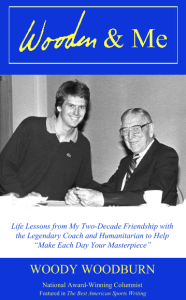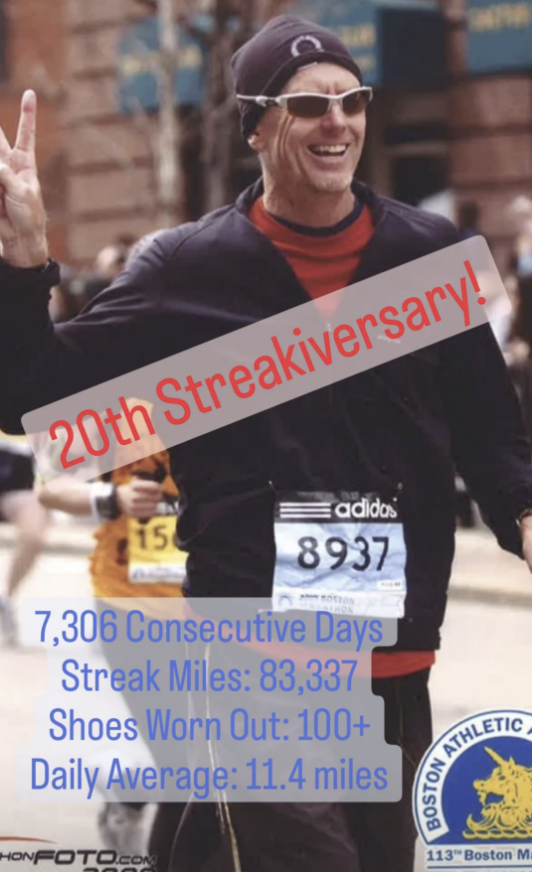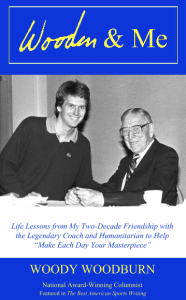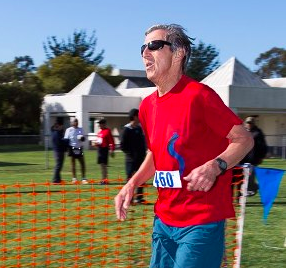(2012)
Write Like a Runner Training For a Marathon
Few feelings of personal satisfaction rival the accomplishment of completing a marathon. While the race distance measures an imposing 26.2 miles, in truth having a finisher’s medal placed around your neck requires hundreds and hundreds of training miles over many months, even on days you feel too tired to lace on your running shoes and head out the door. Perhaps especially on such days. As renown track coach Bill Dellinger once observed, “Good things come slow, especially in distance running.”
Good things also come slow in writing. Like training for a marathon, it requires day-in, day-out discipline sweating at the keyboard, even on days when writer’s block strikes. Perhaps especially on such days.
As an award-winning newspaper columnist for more than two decades, deadlines in the press box kept me in tip-top writing shape. However, I lost this welcomed discipline and had to leave the daily grind after I was rear-ended by a speeding drunk driver; the collision caused permanent nerve damage and required disc-fusion surgery in my neck. Following the life-changing event, I have found that the approach used in marathon training is equally effective for freelance writing. I have completed more than a dozen marathons, including the prestigious 2009 Boston Marathon, and by applying these long-distance training methods to my writing I recently completed a non-fiction manuscript I am now shopping to agents.
Just as a marathon training schedule aims to improve a runner’s speed as well as his or her stamina, I am confident you can improve both the quantity and quality of your writing by following these key distance running doctrines.
 BUILD YOUR BASE. In order to run 26.2 miles on race day without cramping up or breaking down, a person has to build a solid “base” of 500 miles or more over the preceding months. This entails slowly and consistently increasing your mileage as you grow stronger until you are running 30, 40 or even 60-plus miles each week. Consistency is the key; running 20 miles one week and 40 the next will only lead to injury or burnout.
BUILD YOUR BASE. In order to run 26.2 miles on race day without cramping up or breaking down, a person has to build a solid “base” of 500 miles or more over the preceding months. This entails slowly and consistently increasing your mileage as you grow stronger until you are running 30, 40 or even 60-plus miles each week. Consistency is the key; running 20 miles one week and 40 the next will only lead to injury or burnout.
So, too, must a writer build a base – rather than miles on the road, hours at the keyboard are crucial. Set a weekly goal to begin with, perhaps as moderate as two hours (six days of 20 minutes), and then build on it. A simple way to do so would be to add five minutes on average to each writing session. In just over three months from such a humble start you will have built up to writing 10 hours a week! (If you prefer, your goals could be in words or pages written.) Once you achieve your goal base, be it four hours a week or 40, try to maintain it.
Training for a marathon requires running nearly every day. As the late, great University of Oregon coach Bill Bowerman exhorted his runners: “There’s no such thing as bad weather, just soft people.”
Similarly, writers must avoid daily excuses; there can be no such thing as writer’s block.
LOG YOUR MILEAGE. To stay on track to reach your goal it is important for a runner to keep a training log or journal. Ditto for a writer. If your goal this week is to write for three hours, that does not necessarily mean you must write 30 minutes a day for six days. If you only manage 20 minutes one day, you can pick up the pace with two days of 35 minutes or perhaps one day of 40 minutes. However, unless by design (see Long Runs below) it is best to not to skip days or stray too high from the average daily quota required to meet the weekly goal. Inconsistency will turn a pleasant writing or running routine into a daunting chore as you try to make up for lost time. Again, to do so is to flirt with injury and burnout.
Writers, like runners, are often pleasantly surprised by how quickly the words and miles pile up when the “workout” becomes a habit. For me these habits have become a daily obsession: I have a consecutive streak of running at least three miles daily for more than six years. Two years ago, this inspired me to start a writing streak of at least 20 minutes daily. I find these streaks to be great cures for the occasional running and writing blahs. In fact, most often three miles turns into a run of five or eight miles and 20 minutes writing becomes 45 minutes or an hour.
HARD DAYS, EASY DAYS. After building a solid base, a distance runner turns to focusing on getting faster and running farther in a single workout. This is accomplished with a “hard day” followed by one or two “easy days.” A hard day may consist of “speed work” in the form of a shorter run than usual with much of it at a faster pace; or a longer run than usual; or even a combination of the two.
“Easy days” – also called “recovery days” – are generally shorter and at an easier intensity, or may even be a complete day off. Don’t underestimate the importance of recovery days because the rest allows you to recharge your spirit and also makes it possible to give your best on the hard days.
At the writer’s desk, a hard day of “speed work” might entail completing a magazine piece on deadline; crafting a number of quality queries; or perhaps putting your nose to the grindstone and working though a section of your manuscript that has been giving you great difficulty.
For both the runner and the writer, it is important to follow up each hard day with at least one easy day. For some writers, this might mean editing their raw work; for others it might consist of writing freely without worrying about spelling or grammar. You can get away with a consecutive string of hard days over the short term, but break the rule often and you are dancing with injury or burnout down the road. In this same vein, with running and writing it is important to mix in an occasional easy week (perhaps during a vacation) now and then as well.
LONG RUNS. Finishing a marathon requires not only stamina of the body, but also of the mind; long runs build both, making the legs and lungs stronger as well as one’s confidence and power of concentration. Indeed, a successful marathon training schedule features a few long runs of 20 miles. Of course, a runner slowly builds up to this by adding a mile or two at a time to their weekly long run.
Not only does a 16-or-20-mile run provide an instant boost in morale (Maybe I can run a marathon after all!) it also makes the workouts to follow that much easier. Compared to an 18-mile run, four miles of speed work is much less daunting. Similarly, putting in an extra-long session at the writing desk every week or two provides a dose of confidence and accomplishment while also making it much easier to wrestle with the keyboard for your normal writing “workouts.”
TUNE-UP RACES. Most runners enter a 5K or 10K race, and probably a half-marathon too, while training for a marathon. These shorter races offer a sense of one’s growing fitness level, and also provide confidence and motivation towards the bigger task ahead. The same is true for a writer working on novel or other manuscript; taking a break to write a short fiction story or magazine piece can sharpen your skills and provide a welcome break from your grander challenge.
GET A TRAING PARTNER. Having a training partner, or weekend running group, can keep you from experiencing the “loneliness of the long-distance runner” while providing valuable motivation, support and feedback. Similarly, a writing partner or group can be invaluable in helping keep you on track and growing as you pursue your writing milestones.
BE PROUD OF YOUR MEDAL (AND METTLE). “Running is the greatest metaphor for life, because you get out of it what you put into it,” talk-show host – and marathon finisher – Oprah Winfrey has said. To finish a marathon requires putting in the endless training miles; to finish a manuscript requires putting one’s butt in the chair day after week after month. As renown author Norman Vincent Peale put it: “Anybody can do just about anything with himself that he really wants to and makes up his mind to do. We are capable of greater than we realize.”
To be sure, writing a book is a marathon of an endeavor; one you might feel is beyond you. Think again. By following in marathoners’ footsteps, you can – and will! – reach the finish line.


















